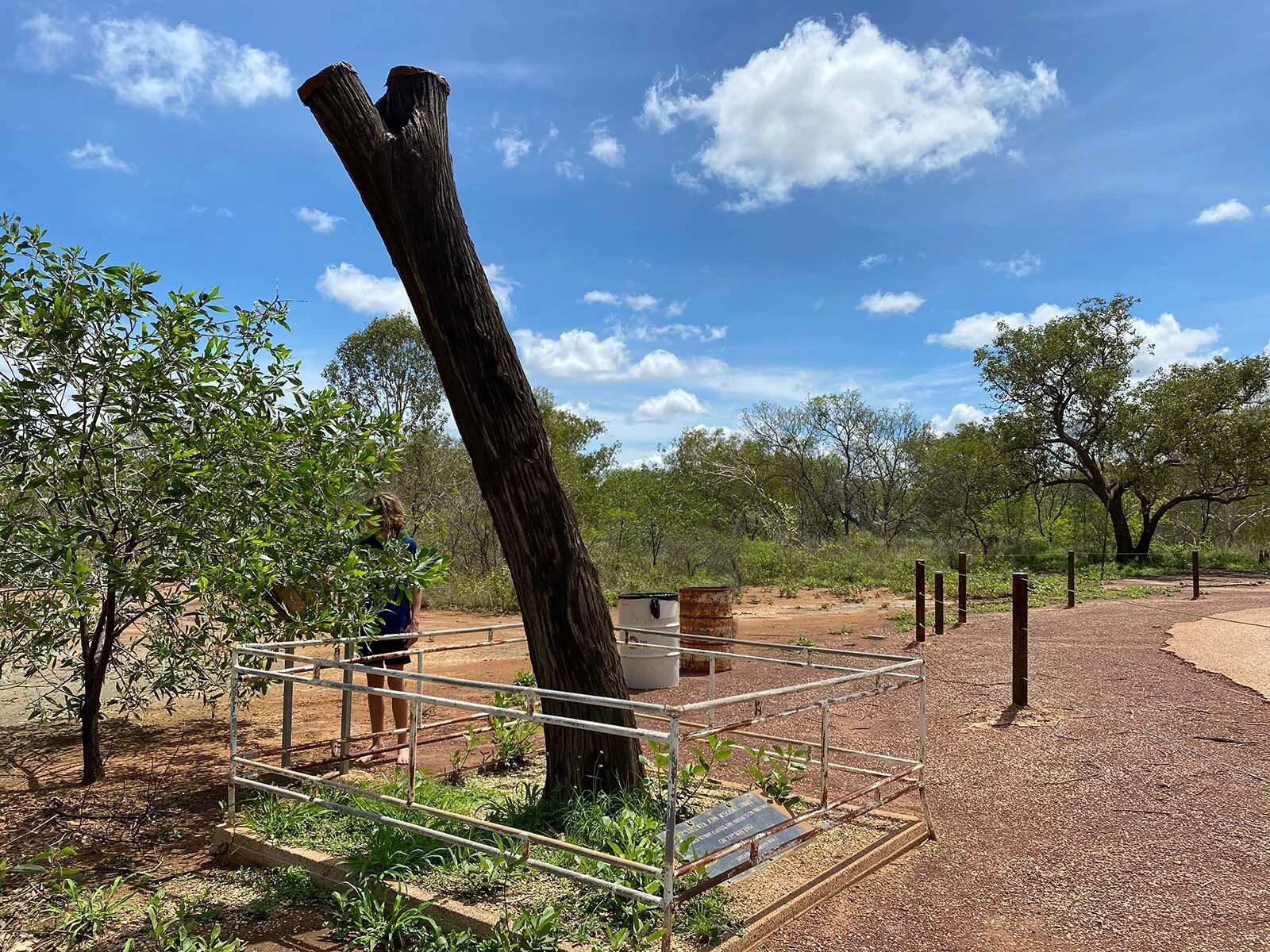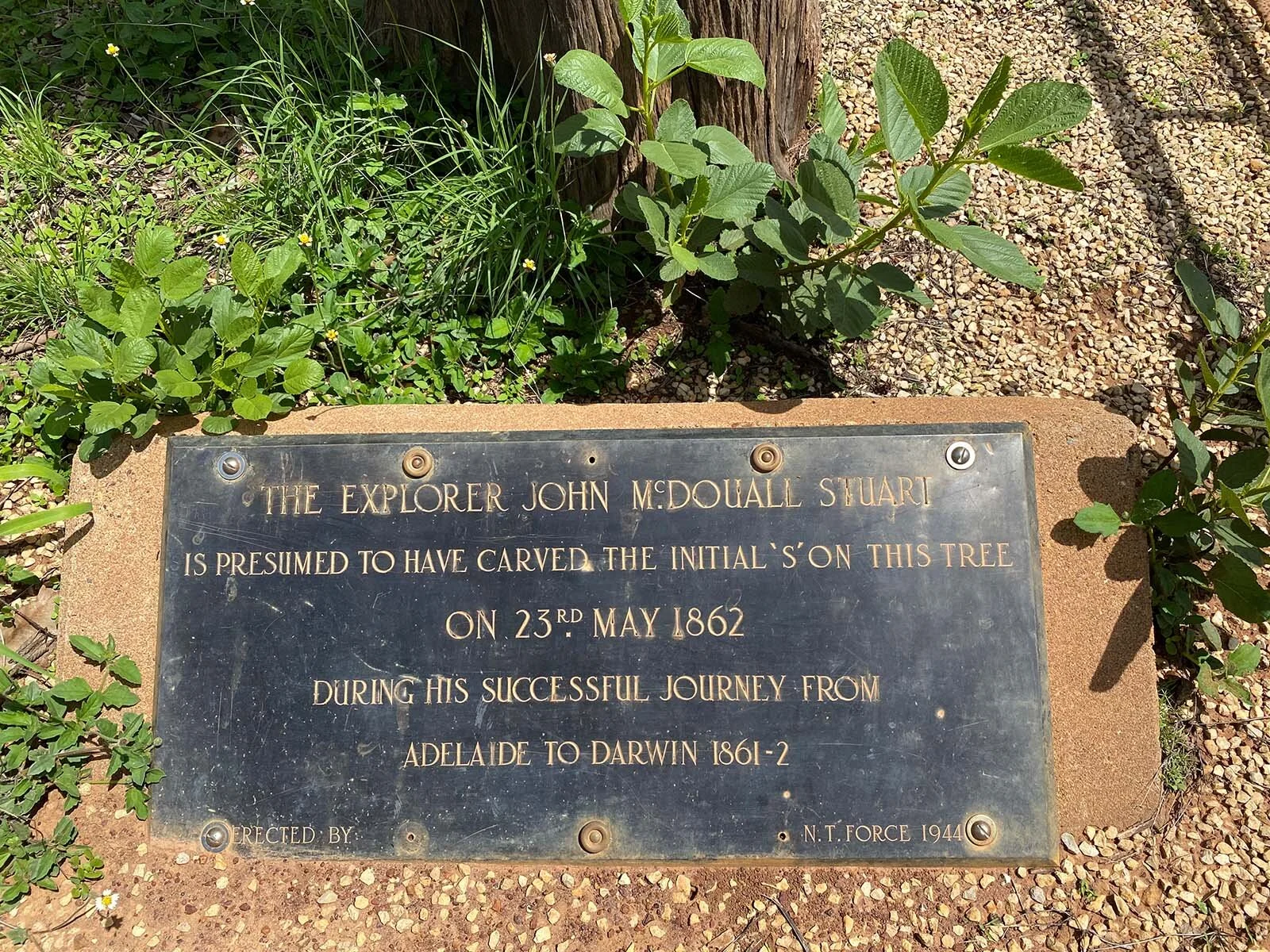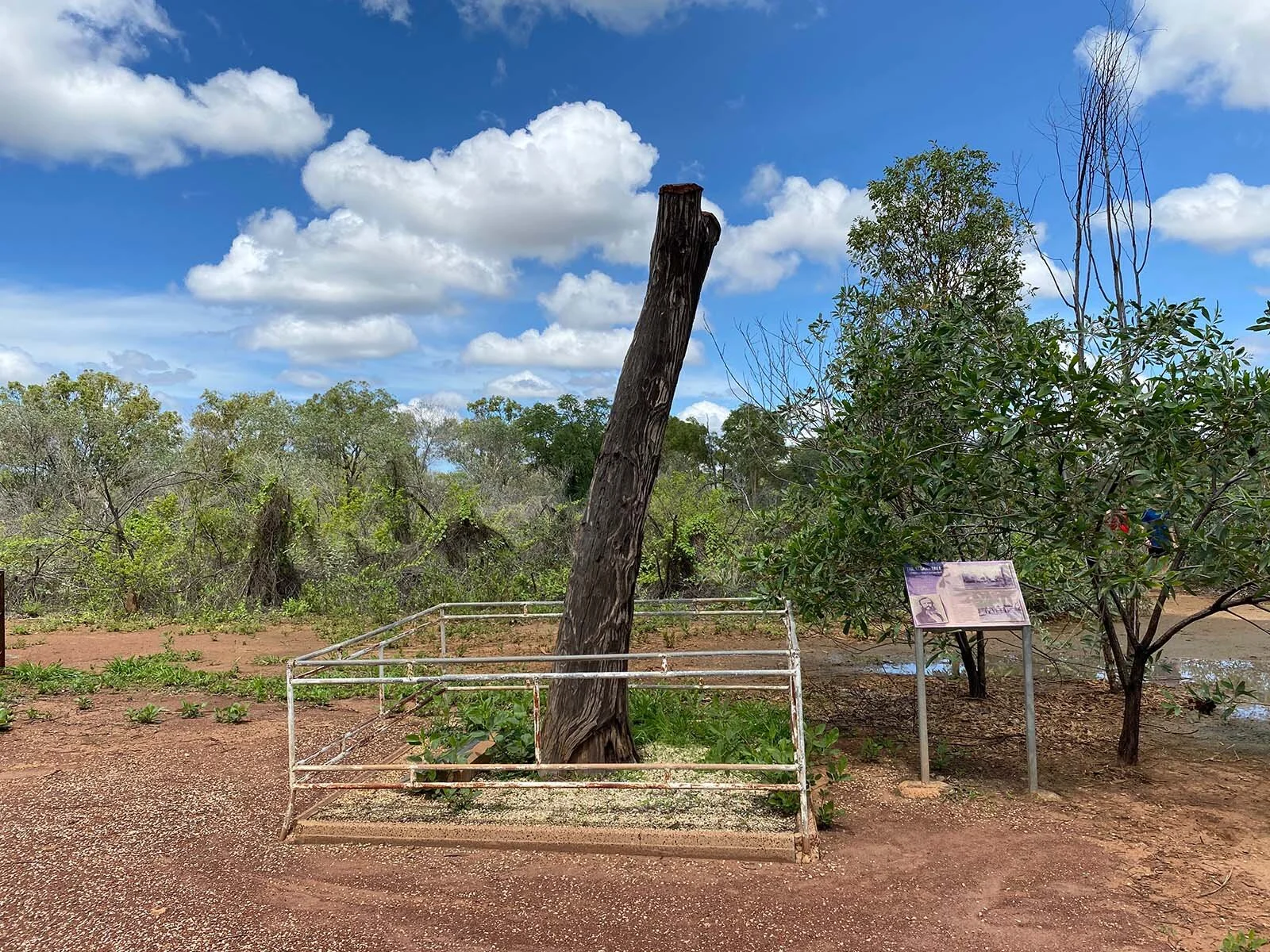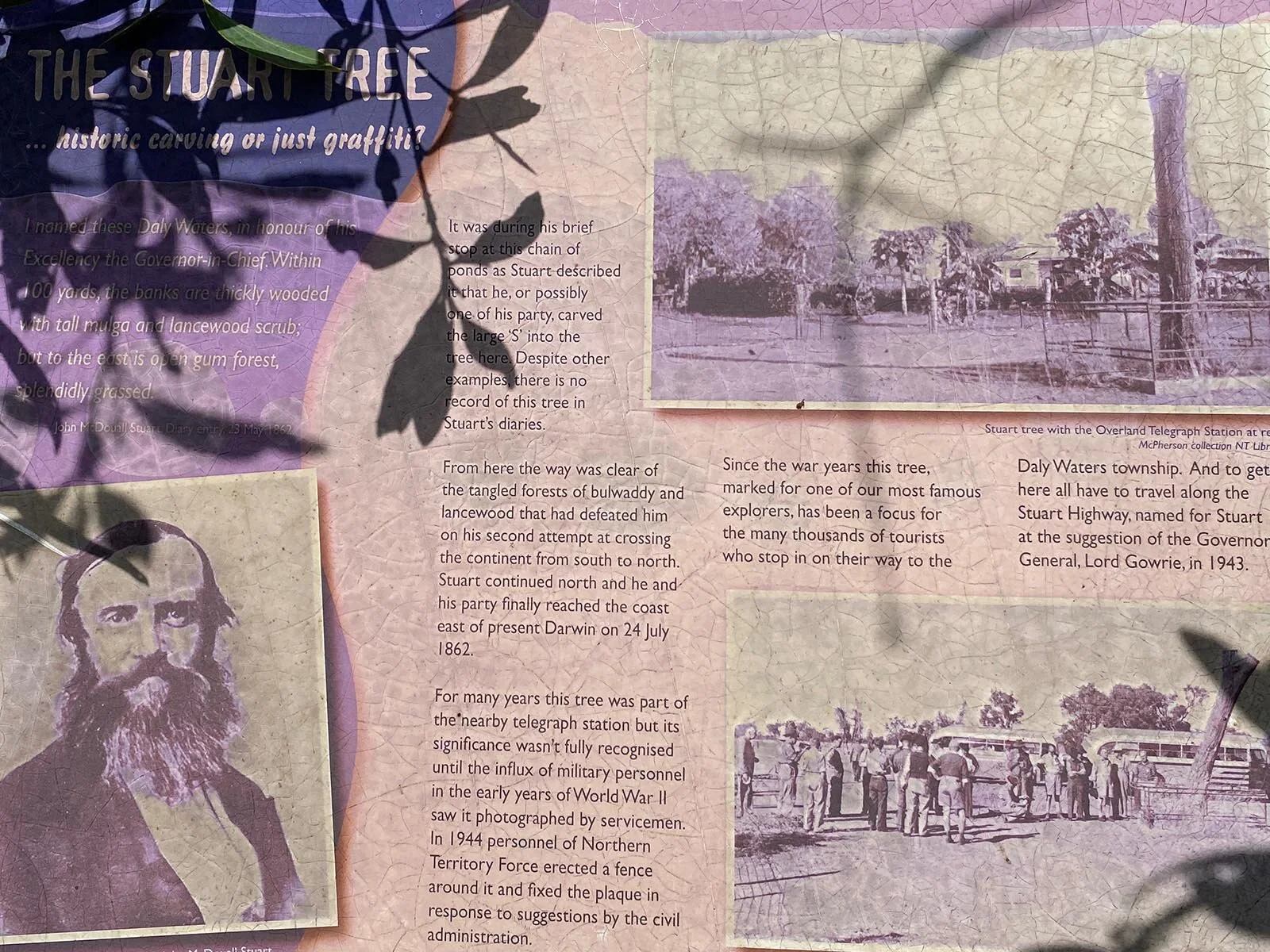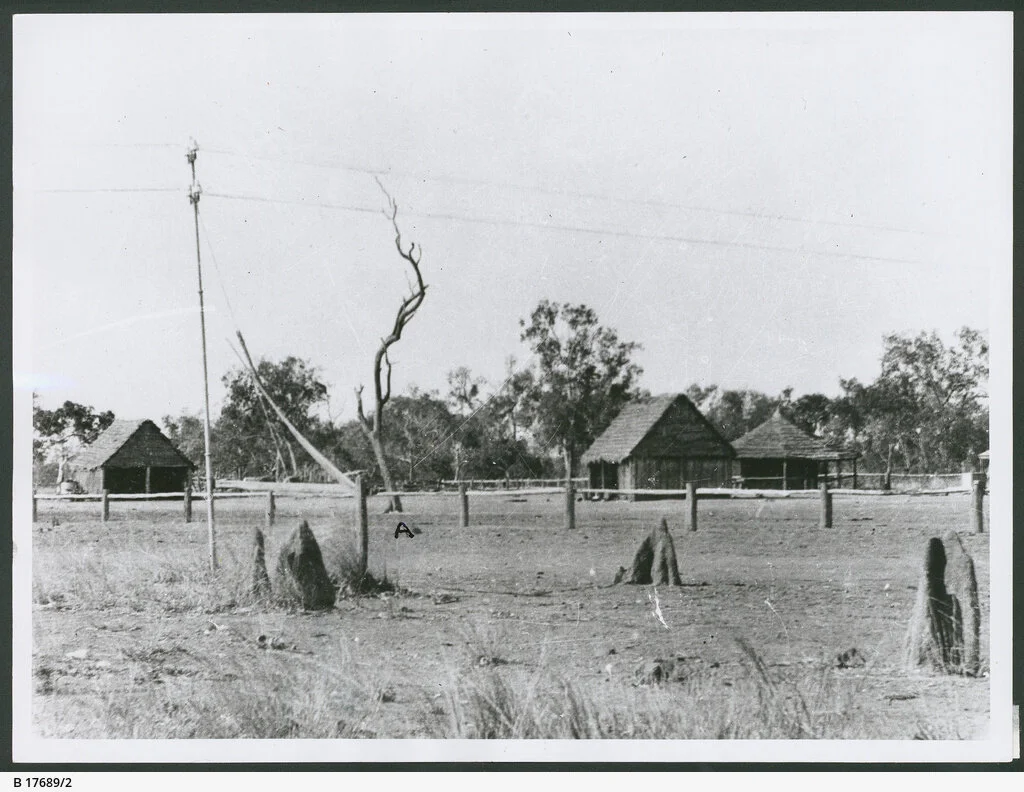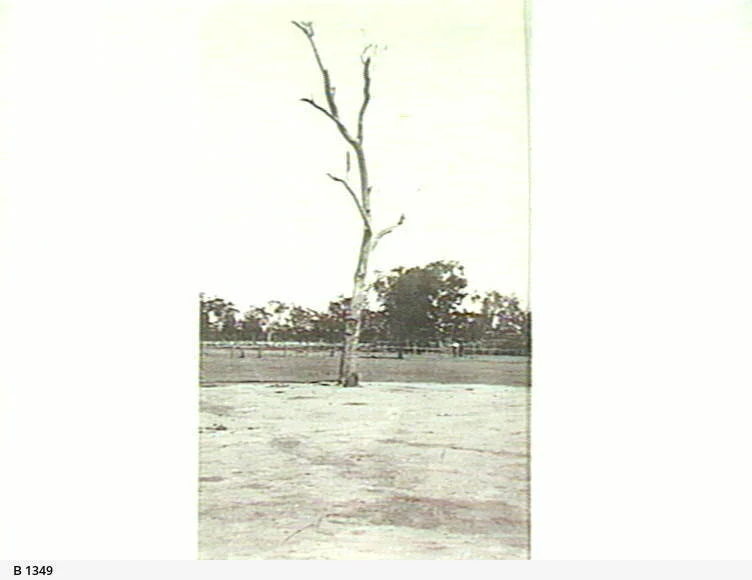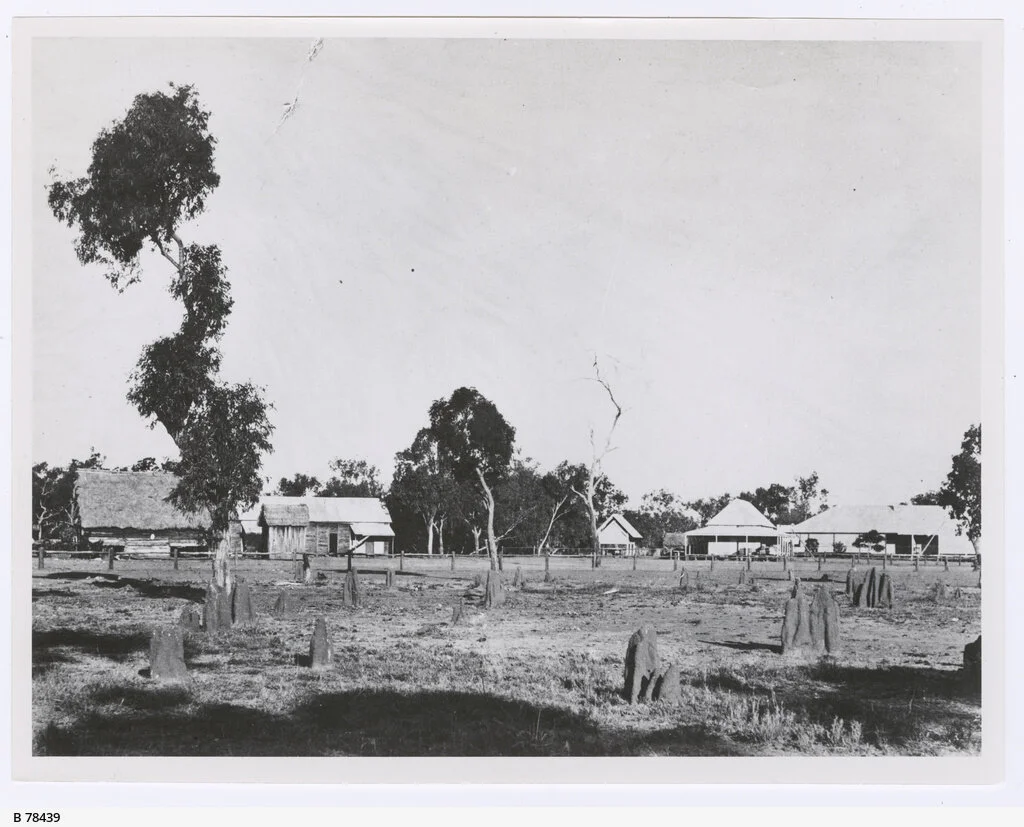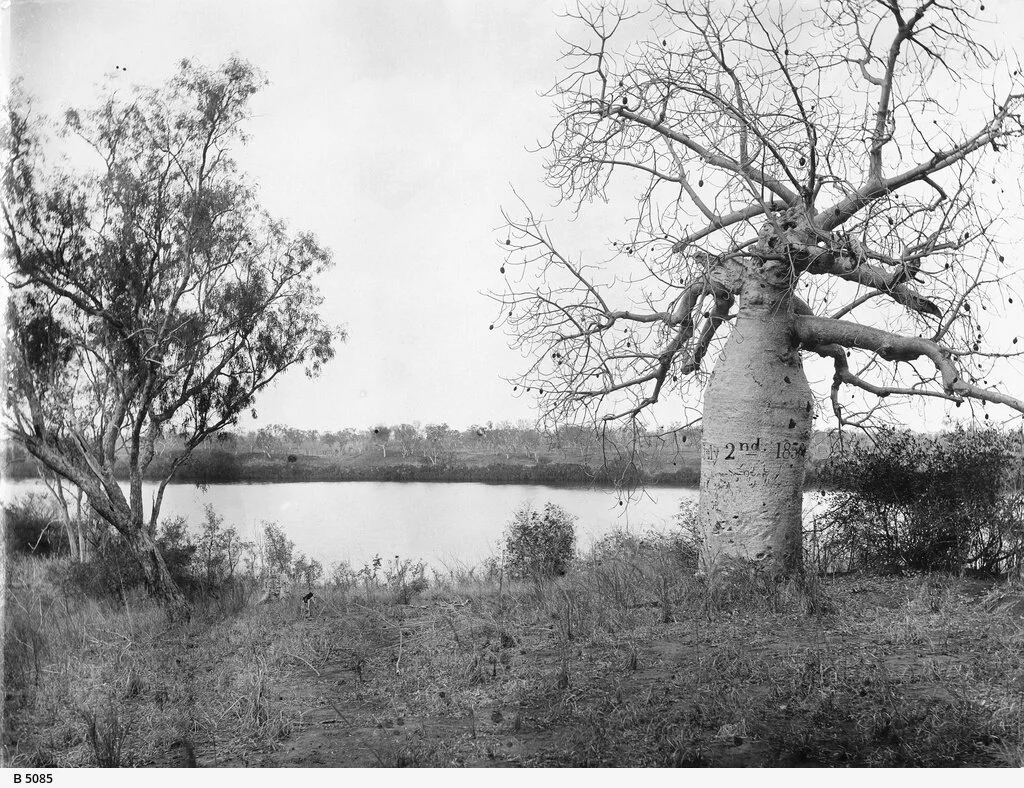Daly Waters History; Stuart's Tree
Stuarts Tree, Daly Waters (2021)
Daly Waters History; Stuart's Tree
On the outskirts of Daly Waters town, a forlorn, dead tree trunk stands. The tree trunk is protected by an aging pipe fence, a concrete border on the ground, and a memorial plaque at its base. The presentation gives the impression of a lost cemetery with a solitary occupant. A fading information board next to the tree provides some insight into the cultural significance of the stump.
Registered with the National trust as a significant tree:
Known as ‘Stuart’s Tree’, the trunk has an ‘S’ blazed on it, and in 1944 the NT Force erected a plaque by it: “The explorer, John McDouall Stuart is presumed to have carved the initial S on this tree on the 23rd May 1862 during his successful journey from Adelaide to Darwin 1861-62”. This plaque has since been removed and exhibited in the Daly Waters Hotel. The tree has been dead for over 100 years. (2)
This is Stuart’s Tree that has the letter S (not at all clear in 2020) carved into the trunk and presumed to be carved by the explorer, John McDouall Stuart in 1862.
The tree is only presumed to be carved by the explorer, John McDouall Stuart, or one of his party.
Why only a presumption?
Well, Stuart kept a diary on this expedition, and it makes no mention of marking a tree at Daily Waters. The lack of mention in the diary does not however preclude it from being marked by Stuart or one of his party. Stuart’s expedition spent fifteen days on the journey north and one day on the journey home at Daly Waters. This was considered a long stopover for Stuart and he or one of his party could certainly have engraved an S on the tree during this period.
It was a well-known practice for early explores to carve details into the trunks of trees. Stuart himself notes in his journal (1862) that on reaching the northern seashore (Point Stuart) he has a tree trunk engraved.
Thursday, 24th July,
“After all the party had had some time on the beach, at which they were much pleased and gratified, they collected a few shells; I returned to the valley, where I had my initials (J.M.D.S.) cut on a large tree, as I did not intend to put up my flag until I arrived at the mouth of the Adelaide.” (1)
While his journal helps to support the practice of marking trees on this expedition it does raise the question of why the tree in Daly Waters was only marked with only an S and not the full J.M.D.S. The full J.M.D.S. would likely have been a more official marking.
MS in brown ink on mount "Stuart's tree. Marked by him at Van Dieman's Gulf 1863 / Found by McMinn's party 1884". Depicts Stuart's Tree with its large blaze of which "JS" is visible. Photo 7
The next big event at Daly Waters was the establishment of the telegraph station in 1872. This was a wooden and galvanized iron building that was in very close proximity to Stuart’s tree. The original telegraph station no longer exists however numerous photos of the telegraph station show Stuart’s tree to be in very close proximation to the station. The tree is dead in all the photos but does have a very typical slant to the trunk. The first photo to show this tree is dated approximately 1875. Many of these photos refer to Stuart’s tree and it must have been of significance for so many people to take a photo of a dead tree. I could however find no close-up photo of the inscription on the tree trunk.
We may never know who inscribed this tree, but it certainly could have been Stuart or one of his party.
As a footnote
Early expeditions into the hinterland of Australia were actively encouraged if not formally required to mark their passage across the land. This was achieved by either blazing trees or erecting cairns of stones. One example of this may be found in the Handbook of instructions for the guidance of the officers of the Elder Scientific Exploration Expedition with the following instructions. Where there are trees, they should be marked, after removing a sheet of the bark, by cutting with a chisel the initial letters of his name, with the date and number, thus:- D.L. No. 1. 16-4-91. (3)
Photo caption (Photo 5)
This Boab tree on the banks of the Victoria River shows the date, July 2, 1856 carved in its trunk by the expedition artist Thomas Baines who marked the tree with the dates of the arrival and departure of the expedition. This was to serve as a marker in case the expedition ran into trouble. [On back of photograph] 'Gregory's marked tree / Victoria River / Photographed in 1891 / Marked by Gregory's party in 1856 / The trees were marked by a member of Gregory's North Australian Expedition in 1856. See Lieutenant Chimmo's account of the finding of Gregory's camp (Royal Geographical Society Proc. v.1, 1857, p. 261) also Searcy's 'Australian Tropics', p. 206'.
References
John McDouall Stuart SocietyJOHN McDOUALL STUART – SURVEYOR-EXPLORER, 1815 – 1866. . Available, http://johnmcdouallstuart.org.au/729-2 Accessed March 14, 2021.
Land for Wildlife and Garden for Wildlife.
https://wildlife.lowecol.com.au/wp-content/uploads/sites/25/Katherine-Daly-Rivers-10.pdfState Library of South Australia, Taking it to the edge: did you know? Historic trees or trail blazing, https://www.samemory.sa.gov.au/site/page.cfm?u=403. 9 June 2021
Photographs
Photo 1 (1920)
State Library of South Australia, Daly Waters [B 17689/2] • Photograph. John McDouall Stuart's Tree, Daly Waters, N.T. Approximately 1920
Photo 2 (1875)
State Library of South Australia, J. McD. Stuart Expeditions [B 1349] • Photograph. Approximately 1875. https://collections.slsa.sa.gov.au/resource/B+1349
Photo 3 (1913)
State Library of South Australia, Daly Waters [B 487] • Photograph. J. McD. Stuart's marked tree, Daly Waters. 1913
Photo 4 (1875)
State Library of South Australia, Daly Waters Telegraph Station [B 78439] • Photograph, Approximately 1875. 'Daly Waters Telegraph Station (looking South East)'. Written on reverse: S S217
Photo 5
State Library of South Australia, Gregory's Marked Tree [B 5085] • Photograph. https://collections.slsa.sa.gov.au/resource/B+5085
Photo 6
Elliott, F. J 1891, Tree marked by David Lindsay at Moses Creek, Skirmish Hill, during the Elder Scientific Exploring Expedition, 1891-1892, State Library of Western Australia < slwa_b5227739_1>
Photo 7
Foelsche, P. (Paul), 1831-1914, (1884). Stuart's Tree. Available at:https://hdl.handle.net/10070/436418 [accessed 13 April 2021] ph1060-0027

